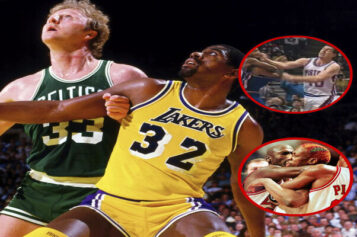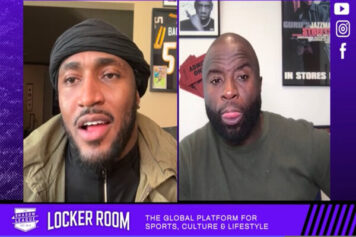March Madness was officially born on this day, March 26th, in 1979. The NCAA Tournament had already been in existence for 40 years and seen its fair share of great moments, from the John Wooden dynasty at UCLA to Bob Knights undefeated Indiana team in 1976.
Most people assume that Michigans Fab Five, with their bald heads, baggy shorts and black Nikes in the 1990s were the first team to transcend the games athletic limitations into the realm of cultural phenomena while exporting the swagger, attitude and fashion of urban America for mass consumption, but that honor actually belonged to Al McGuires 1977 championship squad at Marquette University.
The title matchup in 1966 remains college basketballs most important game, when the all-black starting five at Texas Western took the court at Marylands Cole Field House against the University of Kentucky at the height of the Civil Rights Movement. Their victory foreshadowed a seismic shift that was on the horizon, ushering in the immense change and aesthetic enhancements that would later help the game flourish.
But no NCAA Tournament championship game, before or since, can compare with the one that took place at the Special Events Center in Salt lake City, Utah in 1979.
Because sports and mythology often intertwine, its easy to lose some perspective on the actual events surrounding the game between Michigan State and Indiana State, and their remarkable stars Magic Johnson and Larry Bird.
No one knew that it would be a watershed moment, not only for college basketball, but for the entire sport on a global scale. There was no Sports Center, no toxic newspaper columnists inebriated with the sounds of their own uninformed bloviations masquerading as experts while being ubiquitous on radio and television.
The only people who truly understood the breathtaking brilliance of Magic and Bird were those who saw them play in person on a consistent basis. Wed heard that they were exceptional, and Larrys numbers alone, an average of 29 points, 15 rebounds and six assists per game that year confirmed it.
But those numbers didnt tell the whole story, just as Magics averages of 17 points, eight assists and seven rebounds were woefully short of explaining his revolutionary talent as a bigger, flashier version of the great Oscar Robertson.
The majority of the approximately 35 million people who tuned in to the televised broadcast, which remains a viewership record that has only been approached by the 1985 final between Villanova and Georgetown, had actually never seen Magic and Larry play live on TV. In fact, after hearing about Birds exploits, many viewers were shocked to find that he was white when they settled in to watch the game.
Nearly two of every five people watching television that night watched the 1979 game, Len DeLuca, who was the director of programming at CBS Sports at the time, told the Associated Press. It was a giant leap forward for basketball. It catapulted the game into the ’80s.
While the advent of ESPN and the media explosion of cable television helped college basketball and the NCAA Tournament grow into its current behemoth state, the 1979 title game was the vehicle that propelled that growth.
When the NCAAs TV deal for the tournament expired in 1982, CBS paid $48 million for its rights, triple what NBC had been paying. In 1985, they paid $96 million. In 1988, they anted up $166 million. In 2010, CBS partnered with Turner Sports and secured a 14-year deal to air the tournament at a cost of $11 billion.
In this day and age, were inundated with news stories and highlight footage of undefeated Kentucky. But back in 1979, we knew very little about the undefeated Sycamores of Indiana State, or that the intertwining of Larry Bird and Magic Johnson, had actually begun in the summer of 1978 when they were teammates on a Team USA squad of college all-stars that played in the World Invitational Tournament.
In that championship battle, we had two worthy adversaries, the two most dynamic individual wizards the college game had seen since Pistol Pete Maravich
The 1979 title game married the two superstars and the surprisingly beautiful similarities of their skills as leaders, passers, rebounders and scorers. Defining them by position was pointless, because they practically played every position on the floor. Despite their comparable talents, they brought disparate audiences to the party, with Bird appealing to small-town, rural and white America, while Magic was emblematic of the flashy, urban African-American aesthetic.
Bird walked onto the court with a Loch Ness Monster type of mythology, and a curious audience tuned in to see if the legend was real. The game itself was rather anti-climactic, a 75-64 Michigan State victory. You wont find many highlights in CBS package of the tournaments most memorable moments, but it resonates loudly today because it catapulted the event from a college basketball championship to the phenomenon of March Madness.
Before Magic and Larry, there were no office pools, no bracketology, no great anticipation, no facsimile of a national celebration that well bask in over the next two weeks. They would later go on to resuscitate the NBA with the elevating power of their sophisticated skills, entertaining a rapidly growing fan base with their beautiful passing and an unrelenting desire to win, replacing fan apathy with intense interest while setting the table where Michael Jordan and LeBron James would later gorge their gluttonous hoops appetites.
In 1979, Larry Bird and Magic Johnson snuck up on everybody, and in one game, took basketball on a journey that no one saw coming. They created this thing that hypnotizes the nations collective psyche every year that we call March Madness. They took basketball off the fringe and delivered it to the mainstream, changing the culture and the economic climate of sports along the way.
It was because of them, and because of that game in 1979, that America went mad for not only the NCAA Tournament, but basketball as a whole.



